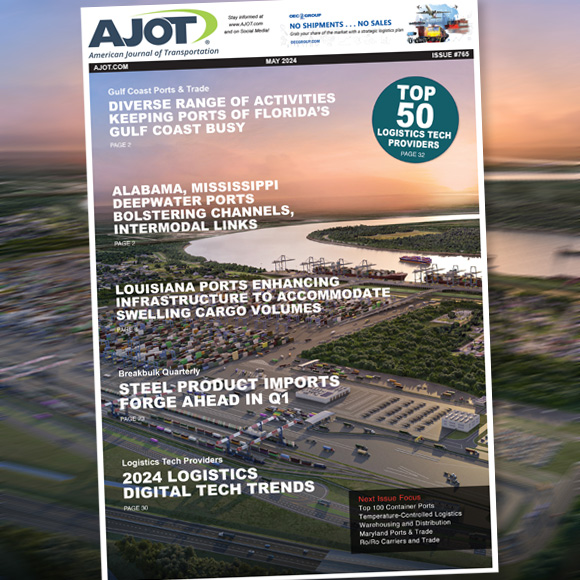IANA/NITL - SCLA offers solution to congestion
By Karen E. Thuermer
Santa won’t be late delivering all those packages of toys and new clothes to good boys and girls this holiday season, but conditions at the terminals at the twin ports of Los Angeles and Long Beach are not helping his delivery. A shortage of dockworkers and breakdowns in the harbor’s infrastructure have created a tangled backlog in the midst of the peak holiday season.
Out in San Pedro Bay, dozens of ships lay anchored, waiting as long as a week to come into harbor and be unloaded. In the past, the wait was three days, tops.
Meanwhile, cargo containers pile up in the terminal yards waiting to be loaded onto trucks or rail cars and whisked to their destination. But not so fast. Drivers must first spend most of the day stuck in traffic trying to navigate Los Angeles’s crowded freeways.
Steve Stallone, spokesman for the International Longshore and Warehouse Union, recently told the Washington Post the port area has been experiencing double-digit increases in cargo every year.
“Everyone in the industry saw this coming, but we didn’t prepare for it,” he says.
Worse, cargo arriving Los Angles/Long Beach from Asia destined for mid-American markets and even the Northeast have few alternatives but to come through the Southern California mega-ports.
“Forty-five percent of all US imports are coming through the ports of Los Angeles/Long Beach,” comments Dougall Agan, principal of Stirling Enterprises, a master developer for what has been billed as the Southern California Logistics Airport (SCLA).
SCLA has been earmarked as a possible solution for some of the congestion problem. SCLA, the former George Air Force Base, is a 5,000-acre multi-modal business complex that integrates manufacturing, industrial and office facilities with a dedicated international airport.
The problem will only escalate. Southern California is projected to represent 78% of all US imports by Year 2020.
Steamships operated by the large carriers in Asia now utilize what has been termed in the industry as post-Panamax ships, another way of saying they don’t fit through the Panama Canal. This leaves East Coast and Gulf ports out of alleviating Southern California’s congestion, although some steamship lines are now choosing to access the US East Coast via the Suez Canal and Mediterranean—a long way to go from here to there, to say the least.
“The most alarming data available is that 65% of the freight coming from Asia is arriving the ports of Los Angeles and Long Beach and being transported east of the Rockies over Chicago to the Northeast,” Agan says.
While industry analysts projected an increase of 5% in cargo earmarked for the ports of Los Angeles and Long Beach, in reality that figure has been closer to 14%. And while the influx of shipments used to come in waves, with the scores of retailers such as Wal-Mart building distribution warehouses in Southern California to service the region and outlining market, there is rarely any lull before the storm. Wal-Mart, itself, is the largest importer of China-made goods in the world.
Agan sees finding solutions such as SCLA inevitable given the overwhelming growth and the fact and great many industries are moving further east of Los Angeles since they cannot find the real estate they need close to the ports.
“This justifies looking inland and developing large warehouses where they can consolidate the freight arriving at the ports,” he says. “What is needed is for these ports to be considered expressway points rather than deconsolidation points for the movement of freight.”
Already some 369 million square feet of space has been absorbed in the region known as the Inland Empire over just 10 years. For this reason, Agan believes SCLA offers a solution for all transportation modes: air, sea, truck and rail.
There is a Solution
While only two to three flights of international cargo are currently coming to SCLA a week, those being ad hoc freighter flights, Agan says SCLA is hoping to get scheduled service soon. Some $100 million is be




